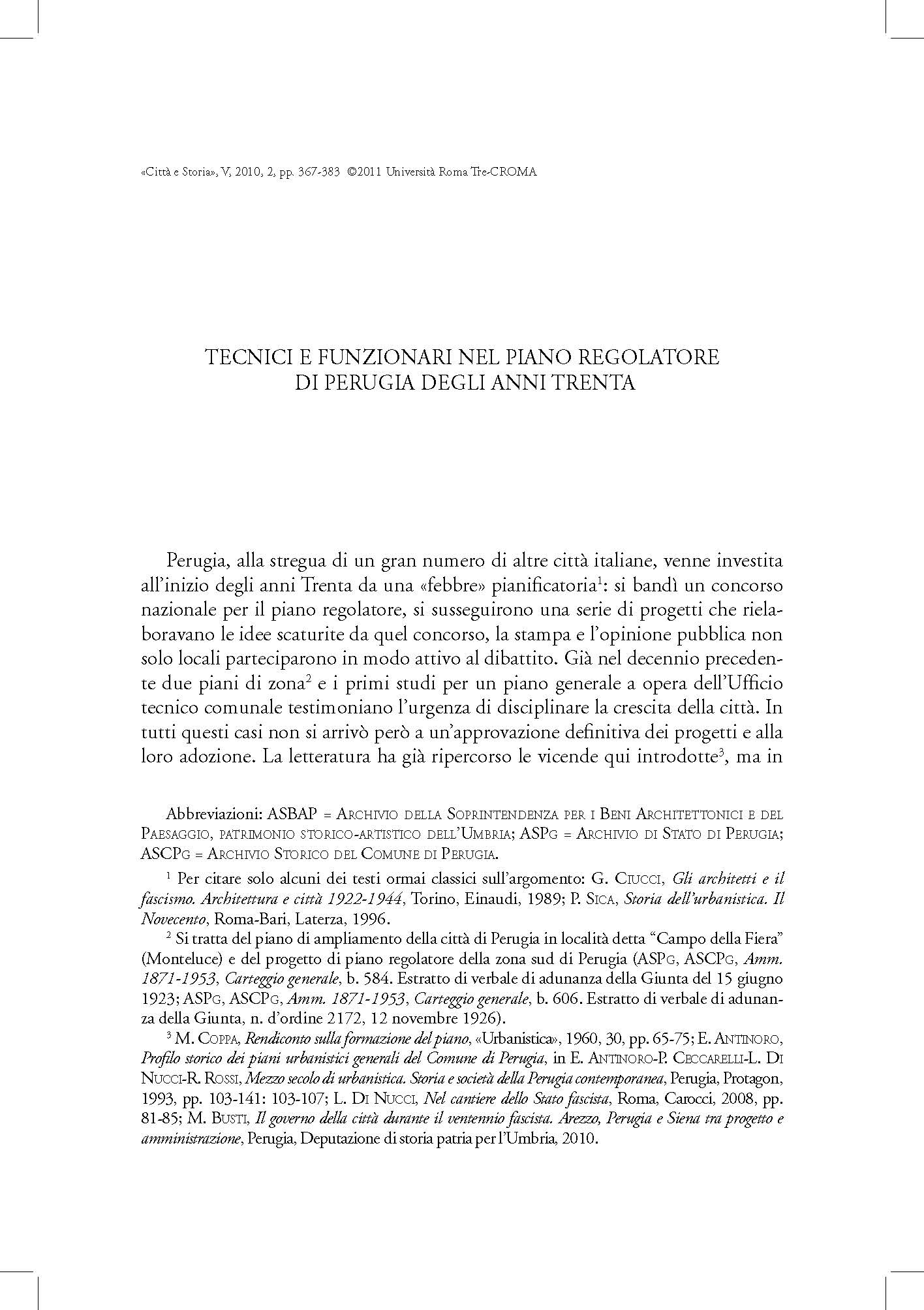Tecnici e funzionari nel piano regolatore di Perugia degli anni Trenta
6,00 €
In 1931 the Municipality of Perugia announced a national competition for the city’s first urban plan. Some former projects were devised by the Engineering municipal office, but none of them were ever approved. Post-competition plans had the same fate. The aim of this article is to analyse the different role that technicians, architects and politicians played in these circumstances, in shaping urban events. City plan competition and projects elaborated during the fascist period are studied looking upon the motivations and explicit or non-explicit aims, which are at their base. The paper also shows the relationships between concrete realizations and choices. Modifications in the city were largely made according to standard procedure and were implemented in the early Thirties, during Buitoni’s government. Modernization issues were connected to the fascist propaganda, but the fascism also aimed at the glorification of the tradition and the conservation (sometimes invention) of the past. Due to the municipality’s hard economic situation and due to the cautious decisions of the technical staff and the local officials, the image of Perugia did not undergo the excessive changes scheduled in the plans. This meant that many of the urban debate’s issues remained unsolved.
In 1931 the Municipality of Perugia announced a national competition for the city’s first urban plan. Some former projects were devised by the Engineering municipal office, but none of them were ever approved. Post-competition plans had the same fate. The aim of this article is to analyse the different role that technicians, architects and politicians played in these circumstances, in shaping urban events. City plan competition and projects elaborated during the fascist period are studied looking upon the motivations and explicit or non-explicit aims, which are at their base. The paper also shows the relationships between concrete realizations and choices. Modifications in the city were largely made according to standard procedure and were implemented in the early Thirties, during Buitoni’s government. Modernization issues were connected to the fascist propaganda, but the fascism also aimed at the glorification of the tradition and the conservation (sometimes invention) of the past. Due to the municipality’s hard economic situation and due to the cautious decisions of the technical staff and the local officials, the image of Perugia did not undergo the excessive changes scheduled in the plans. This meant that many of the urban debate’s issues remained unsolved.

